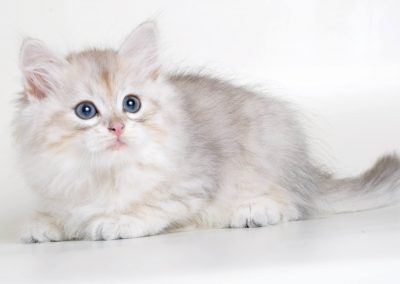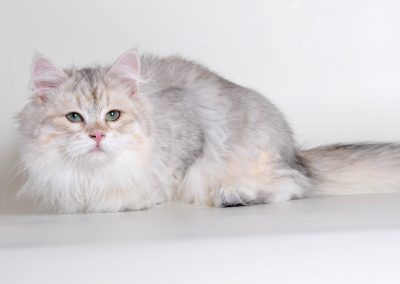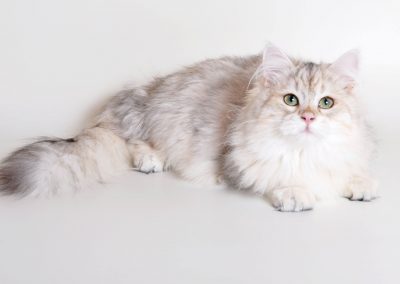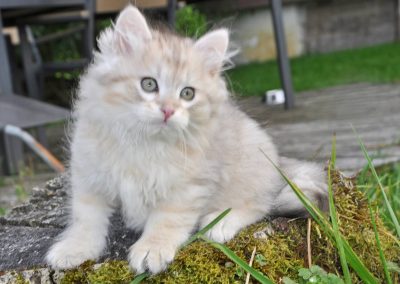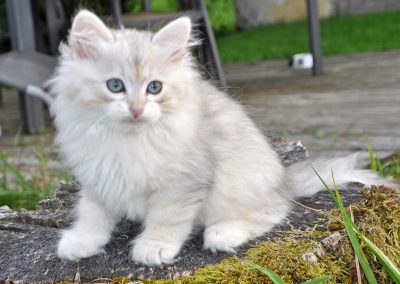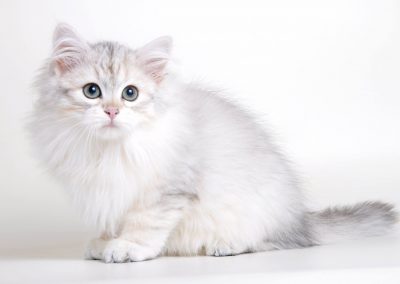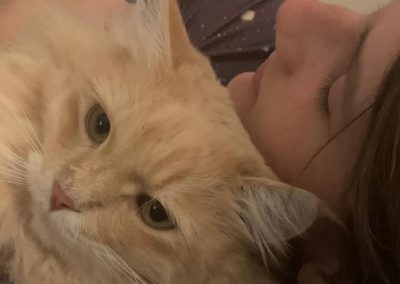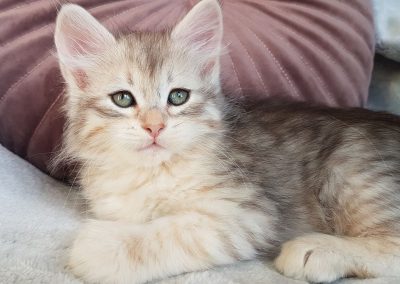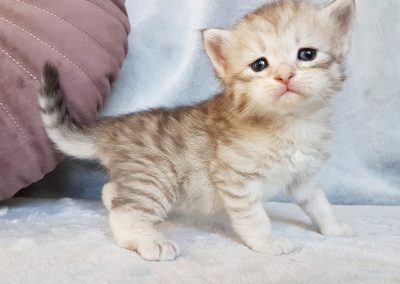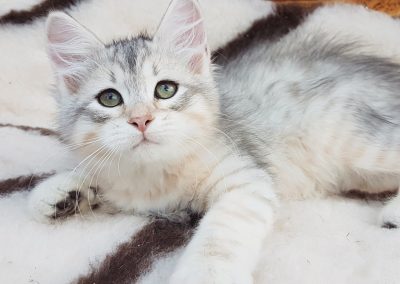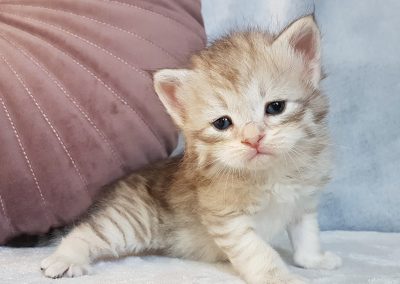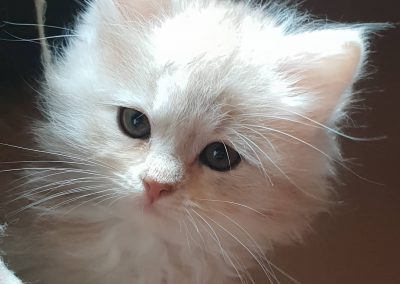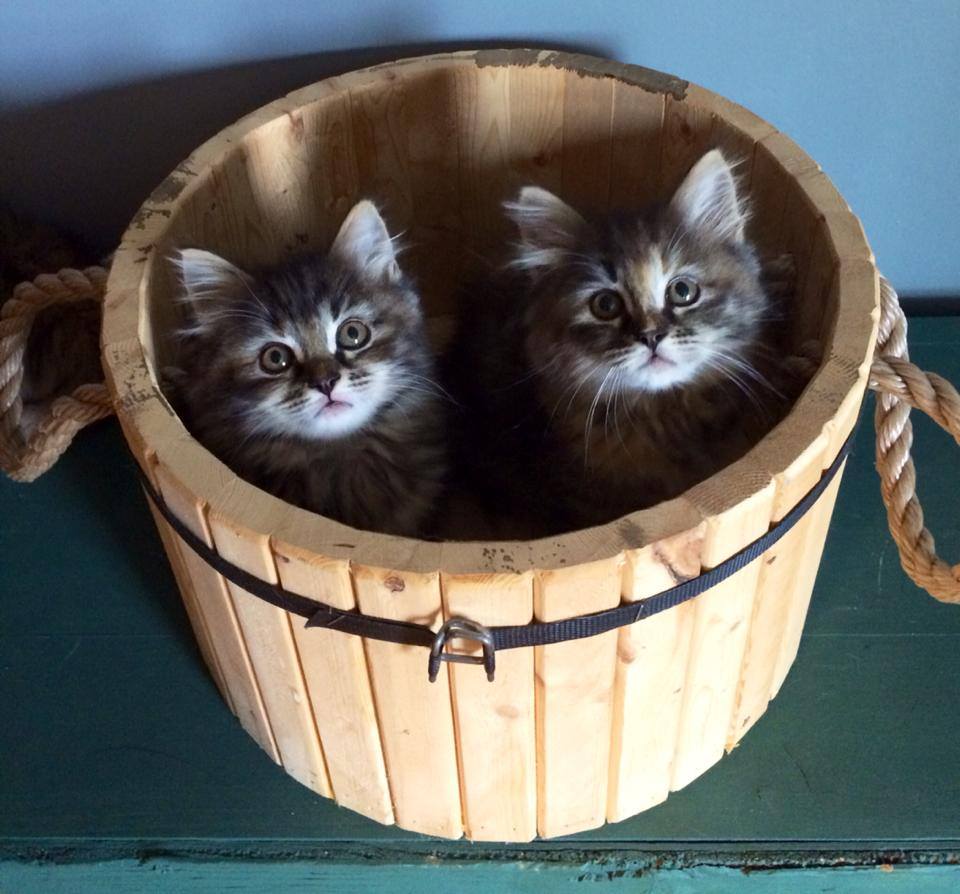
SIBERIAN CATS
Sunshine Silver (Bimetallic)
In 2013, Silvia Perego of Veselka Siberian Cattery in Italy described more such cats. Her stud male, Yankee, came from Poland and is a black silver tabby with white. When he arrived at her cattery at 4 months old, she noticed that he had a “strange” golden-brown spot on his neck and some little other spots on the back. At first this appeared to be rufism. His first litter included a silver tabby daughter, Lady, who had the same golden-brown spot on her neck. Another litter included a daughter, Lizzy, with the same spot. Then Lady, from the first litter, had her own litter with another silver-and-golden kitten like them. In summer 2013, Yankee had two kittens with the golden-brown patch. Although a judge suggested chimerism, there appeared to be a newly emerging gene at work.
The classic golden colour found in Persian cats is due to the wide-band (Wb) gene. This widens the pale brown area at the base of each agouti (banded) hair and confines the darker colour to the ends of the hairs. The paw-pads are either white (i.e. pink) or match the colour at the hair tip. Combined with the silver inhibitors, this resulted in chinchilla and shaded silver Persians. A golden Persian has wide-band and either has no inhibtor gene or has the recessive form of the inhibitor gene.
Research by Eleonora Ruggiero into the pedigrees of Siberian Cats brought out some intriguing details. For example in “Onix Gloria” lines there are golden tabby Siberians born of non-golden parents. In the pedigrees of “Siberian golden” (provisionally denoted sg), golden offspring are born from two non-golden parents. This means the gene was recessive and only expressed when two copies are inherited. It seems it is not the same as Persian golden (Wb with no inhibitor gene or with homozygous recessive inhibitor). Bimetallic females were often registered as tortoiseshell, but didn’t breed as a tortoiseshell as they lacked the red (O) gene (evident when the paw-pads are examined and are never reddish). Their nose leather was dark pink, unlike the nose leather of tabby or genetic tortie cats.
When golden cats started turning up in silver Siberians, it resulted in cats expressing both colours in the coat; something impossible were it the same as Persian golden. The degree and intensity of golden colour (probably influenced by polygenes) rules out rufism or tarnish. These cats were initially referred to as “bi-metal” and later as “sunshine”. Siberian sunshine was established in a breeding programme that used much inbreeding to bring out this recessive trait. Early sunshine cats were dismissed as silvers with high degrees of rufism and not bred from. In 2013, all known sunshine Siberians are agouti (tabby markings) and the colour hadn’t been seen in non-agouti (solid) cats. The sunshine gene affects the agouti (ticked) hairs only”.
– http://messybeast.com/bimetallic.htm (Sarah Hartwell)
Current Siberian Kitten Litter
Available Kittens
Don’t miss out. Browse our current litter and add a new addition to your family. 🙂
site design by: abysmal blue, inc
